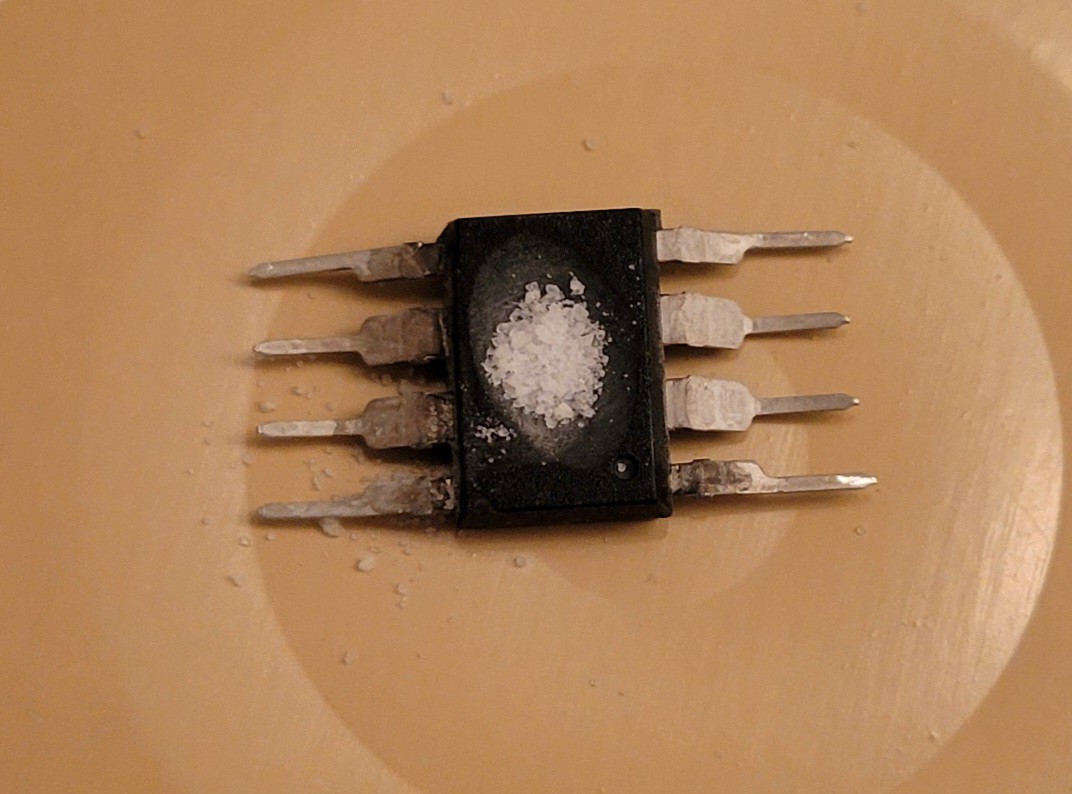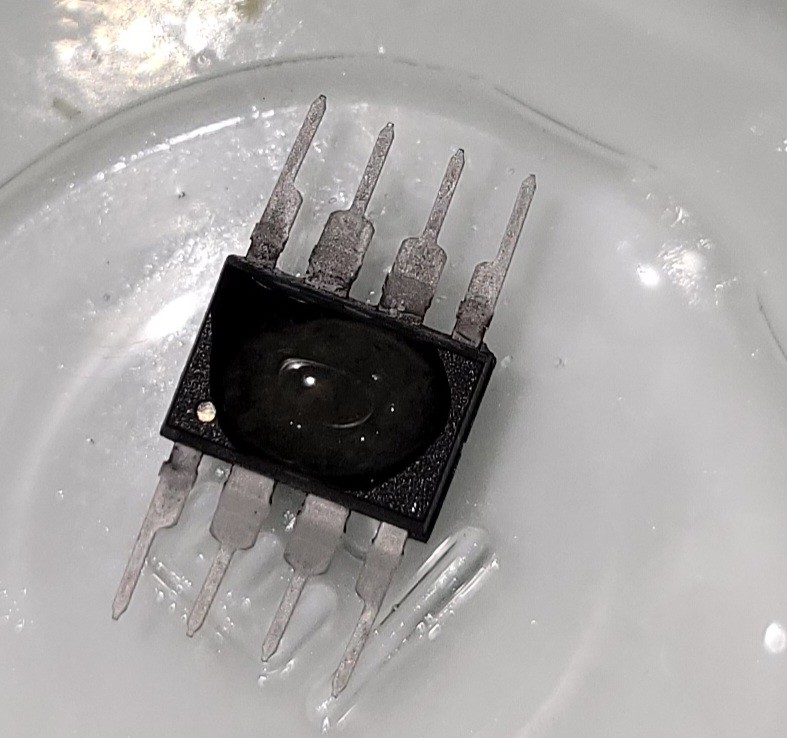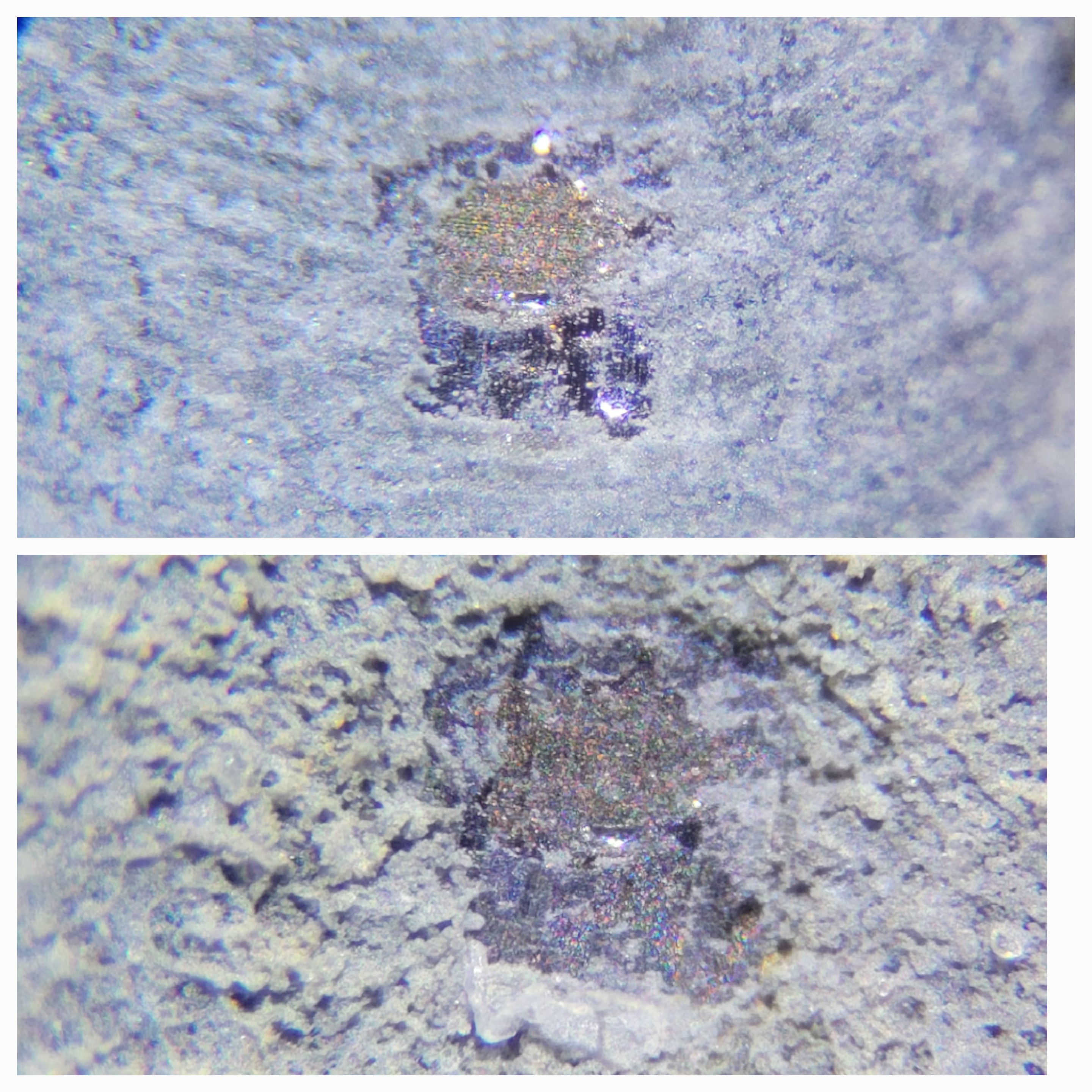As the first two methods did show any significant improvement it was time for something more aggressive.
NITRIC ACID!
As I don't want to buy nor own Nitric acid. I went and bought Potassium nitrate.
Potassium nitrate is a powder with granularity similar to sugar. I've used tiny twizers to add amount which will be 1/3 of space I have there.

Once added one drop of sulfuric acid, potassium nitrate powder quickly dissolved and got this opaque substance.

I've placed the IC inside airtight jar and let it sit for one hour.
I've clean the drop with water (not sure if this the right thing to do, maybe I should use acetone) the first impression was that nothing really happened. On the microscopic level we got a totally different picture.

On the top picture we can see the lines/scratches of Dremel bit. On the bottom picture we can see those lines are gone and all the surface was mildly eaten by acid.
Although I didn't get all the silicone revealed it's a first step in the right direction.
Next thing would be adding heating element that could change temperature room temperature to about 220°c. Once we have this setup we can play around and see which temperature is minimal for epoxy removal.
Discussions
Become a Hackaday.io Member
Create an account to leave a comment. Already have an account? Log In.